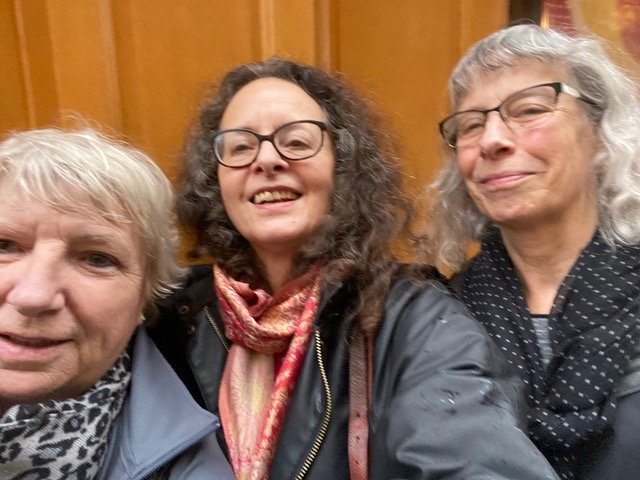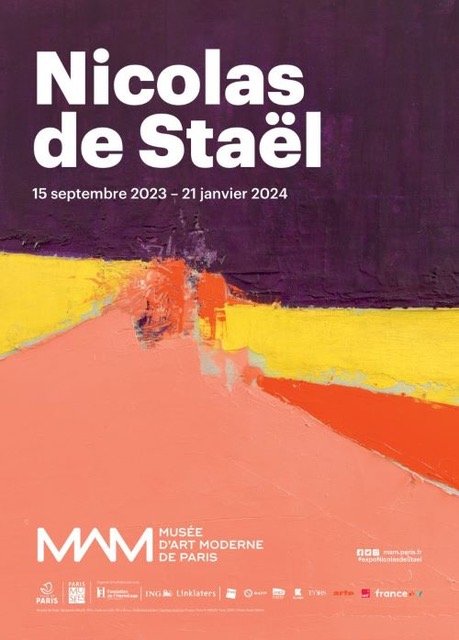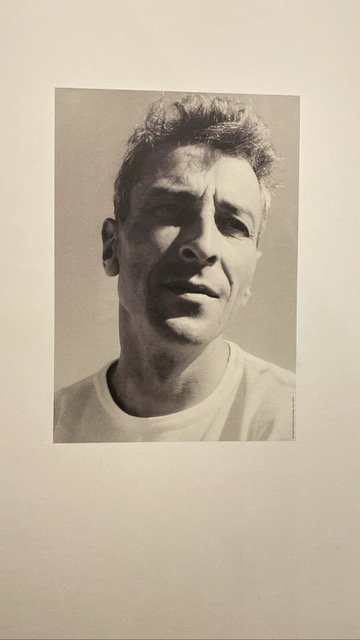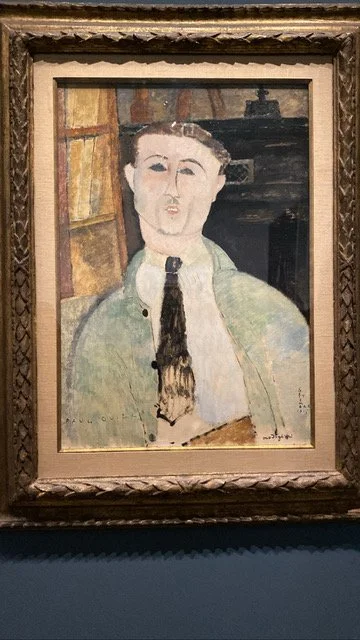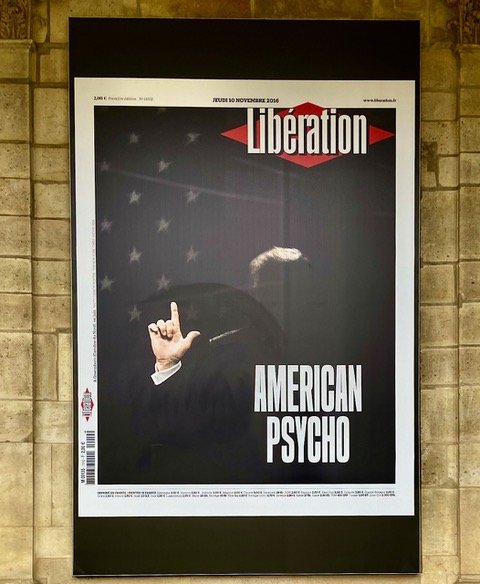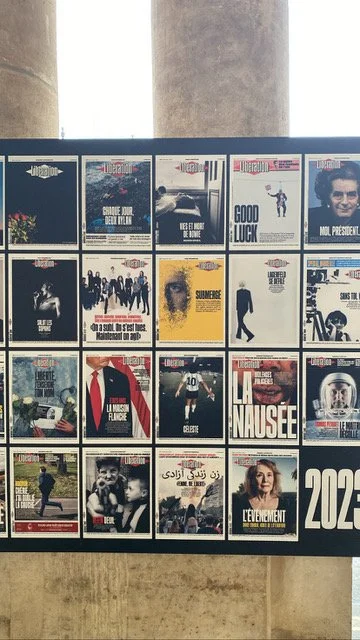Exhibition Stuffing
Bienvenue and welcome back to Musée Musings, your idiosyncratic guide to Paris and art. Knowing that I would be away from Paris for a while, away from my beloved museums, I kept filling up on as many exhibitions as the intermittent rain and my relentless headaches would allow. Which is to say, a lot but not enough!
In the midst of all my busyness, a dear friend who lives in Portland, Oregon, whom I last saw when she was my guest in the Dordogne 8 years ago, emailed to say that she was coming to Paris for a few days, and would I be available. Indeed I would! Sydney and Sharron had come to flâner (stroll around with no particular destination). We found time to meet up between my exhibitions and their excursions. Once at the Café Mulot at Maison Victor Hugo where they toasted their arrival with champagne (it was an Earl Gray for me) and another time at Mariage Frères on Rue Bourg Tibourg where they had shrimp bisque infused with tea and I had a Rooibos.
Let’s see, which exhibitions to tell you today. I would say that the most exciting one was at the Musée d’Art Moderne on the artist, Nicolas de Staël. (Fig 1) I planned to stay for a couple hours and then head over to the Palais Galliera (which is across the street) to take another look at their exhibition, Fashion on the Move. (Fig. 2) I never made it. The de StaëI exhibition was so grand, so mesmerizing, that when I finally looked at my watch, it was 3 hours later and I was only half way through.
Figure 1. Nicolas de Staël, MAM (Musée d’art Moderne de Paris)
Figure 2. Fashion on the Move, Palais Galliera
De Staël’s early life was complicated. He was born in St. Petersburg in 1914. With his parents and older sister (sisters?) he fled Russia in 1919 because of the Russian Revolution. They got as far as Poland, but within a few years, both of his parents were dead. Nicolas and his sister/s went to live with a Russian couple in Brussels. His talent was clear from the beginning, but it was only after years of struggle that he achieved artistic success and financial ease. Eventually, his admirers included French, English and American collectors, among them Duncan Philips (Philips Collection, Washington, D.C.) and Albert Barnes (Barnes Collection, Merion, Pa.) De Staël’s dealers included Paul Rosenberg with whom he eventually signed an exclusive contract.
The exhibition moves along chronologically. We learn about the artist (Fig. 3) and his first wife and then, after her death, his second wife and their children, and finally a third young woman appears. We learn about his friendships with fellow artists, among them Georges Braque, (Fig. 4) the co-inventor of Cubism. We travel with the artist and his ever expanding entourage through Italy and France. It is finally the Cote d’Azur, Antibes where de Staël found a second home. Where he bought a studio and worked feverishly and where, one night, aged 41, he took his own life.
Figure 3. Nicolas de Staël
Figure 4. Nicolas de Staël (left) with Georges Braque
I suppose because we learn so much about the artist and the people closest to him that the reality of someone so talented and so successful, taking his own life is so shocking. And we can’t help but mourn his loss. I’ll tell you more about Nicolas de Staël soon. I hope these few examples of his work whet your appetite for more. What I love most about his work is his fabulous use of color and the fact that he never abandoned the real world. (Figs. 5, 6, 7, 8) As abstract as many of his paintings are, there is always a link to the landscape, to the figure, to the world that we are fortunate enough to see and appreciate through his eyes.
Figure 5. Anne, Nicolas de Staël
Figure 6. Agrigento, Sicily, Italy
Figure 7. Salad Bowl, Nicolas de Staël
Figure 8. The Red Tree, Nicolas de Staël
I had wanted to return to the Palais Galliera, to see the exhibition, ‘Fashion on the Move’ again. Because I had rushed through it when I first saw it and because I wanted to compare it with the exhibition, ‘Mode et Sport,’ that I had just seen at the Musée des Arts Decoratifs. (Fig. 9) Both exhibitions will be on through next year, as celebrations of the 2024 Paris Summer Olympics. (Fig. 10) The exhibitions are not identical even though they share a topic, more about those two exhibitions soon.
Figure 9. Mode et Sport, d’un podium à l’autre’ Musée des Arts Decoratifs
Figure 10. Poster for the Paris Olympics a century ago, 1924
At the Musée de l’Orangerie there is an exhibition that was much larger and much richer than I imagined it would be. Called ‘Modigliani. A painter and his dealer,’ (Fig. 11) it’s about the relationship between the artist Modigliani and his art dealer, Paul Guillaume. Guillaume’s personal collection is on permanent display at the Orangerie. (Figs. 12, 13) It’s a fabulous collection and it must have been even better before his wife and her lover killed him. She apparently made this bargain with the state - if she wasn’t prosecuted for her husband’s murder, she would leave the collection she inherited to the state. Unfortunately, the state didn’t stipulate that the collection had to remain intact. She sold some of his more avant-garde paintings for less adventurous ones that pleased her more. This exhibition confirms Paul Guillaume’s bona fides as an art dealer, which is impressive since he started out as a garage mechanic. More about the exhibition soon.
Figure 11. Modigliani, a painter and his dealer’ Musée de l’Orangerie
Figure 12. One of four portraits Modigliani painted of Paul Guillaume in 1914/15
Figure 13. A slide show of the paintings in Paul Guillaume’s home, Musée de l’Orangerie
My last few days in Paris were devoted to buying items on Ginevra’s list - teas from Mariage Frères and Palais des Thés, toiletries from Caudalie (at the boutique on rue Francs Bourgeois) and French vitamins and supplements which we hope are safer than those manufactured in the U.S. because in France the ingredients are (allegedly) controlled. For many years, I risked life and limb to buy both Caudalie and supplements from Citypharma on Rue du Four. Always crazy crowded, the allure was its bargain prices, especially for Caudalie. But somebody at Caudalie must have gotten wind of Citypharma’s pricing. Now their prices aren’t the bargains they used to be, so going there doesn’t make any sense, at least not to me. I found another pharmacy, par hazard, called Apothical, on rue Faubourg St. Antoine. It’s not too crowded, the prices are good, the staff is knowledgable and fidelity points!
Also on my list - chocolates for our Advent Calendar. For a long time, I bought Advent Calendars from boutique chocolatiers here in Paris. But they were always disappointing - one chocolate in each square and the same few chocolates on repeat. So, for the past couple of years, I have been selecting chocolates at different chocolatiers and making my own calendars (using the calendars I cleverly saved). Last year I purchased chocolates from Patrick Roger, Alain Ducasse, Jacques Genin and Jean-Paul Hevin. This year, I returned to Genin (for pate de fruits) and Ducasse because really, how could I not. (Figs. 14, 15) And I tried a few new places. Among them Plaq, (Fig. 16) a tiny chocolate shop recommended by Gloria, a woman I know who divides her time between Paris and Berkeley and David Leibovitz. When I walked in, it felt familiar, like Dandelion, (Fig. 17) my go-to chocolate shop in San Francisco. I mentioned Dandelion to the woman at the boutique. Turns out they know and work with each other. That was fun. Then I walked into a shop called Charles where the owner’s wife (wait, isn’t she the owner, too?) told me that her husband buys bean to make into bars. At another chocolatier called Edwart, the lovely woman with whom I spoke, told me about the specialities of their place, which I will be sharing with Ginevra soon. Finally, I walked into Pierre Marcolini, (Fig. 18) whose boutiques I often visited in the past and where I plan to become a regular again now that they have opened a shop just down the street from Eataly and Mariage Frères.
Figure 14. A sampling of pate de fruits, a Jacques Genin speciality, rue de Turenne
Figure 15. Le Chocolat Alain Ducasse, rue de la Roquette
Figure 16. Plaq Chocolats, rue de Nils
Figure 17. Dandelion Chocolates, Ferry Building, San Francisco
Figure 18. Pierre Marcolini, rue Sainte-Crox dee la Bretonnierie
As I was walking home from Jacque Genin, I passed by the Archives Nationales, where a few days earlier the exhibition on Louis XVI and Marie-Antoinette had closed. And what do you know, there was a new exhibition in the courtyard. On huge double sided panels, with text in French and English, were photographs from the past 50 years of the journal Liberation. (Fig. 19) One photographer described the joy of working for Liberation this way: “Liberation … gave you immense freedom to express yourself…That allowed you to take distinctive pictures”. (Fig. 20) Among the photographers whose work has appeared in Liberation are Henri Cartier-Bresson and his wife, Martine Franck and the artist about whom I have become completely obsessed, Sophie Calle. The titles of many of the photos, at least the ones that aren’t heartbreaking, are pretty funny. Like the one called American Psycho, (Figs. 21, 21a) which shows a former president of the United States in shadowy profile. You know which one, if not, here’s a hint, he is currently under investigation or under indictment on a variety of charges in various cities and states. Ah, Paris, even when you think that you are going to have a day without an exhibition, on your walk home, you happen upon the National Archives where an intellectually enriching exhibition is just waiting for you! (Figs 22, 23, 24)
Figure 19. 50 ans dans l’oeil de Libé, Archives Nationales
Figure 20. The photo by the photographer who celebrated his independence at Liberation
Figure 21. American Psycho (guess who)
Fig. 21a. La Maison Flanche (instead of blanche, white, it is flanche, burning)
Figure 22. Notre Drame - instead of Notre Dame burning becomes, Our Drama rather than Our Lady
Fig 23. A sampling of covers from 1983-1993 (Clinton bottom right)
Figure 24. From 2013 - 2023, third row down, second from left, the White House on Fire
As I think I have mentioned, mornings are for Proust, evenings are for novels. Having just participated in my final Mystery Book Club meeting for the year, and not having any books on loan from the American Library, I browsed through my bookshelves for something to read. And that’s where I found a book that I had put aside a few months ago. Diane Johnson’s 2021, Lorna Mott Comes Home. Do you know Johnson’s books? I especially love the ones about Americans, mostly southern Californians, mostly living in Paris. The first book, written in 2001, entitled Le Divorce was about a young woman, just out of college, who comes to stay with her older sister in Paris. Since Diane Johnson actually divides her time between Paris and San Francisco, her references are always timely. That book, which was made into a film I didn’t see, was followed in short order by Le Marriage and L’Affaire which loosely includes some of the same characters. For about a decade I would read Le Divorce once a year, when I first arrived in France. Lorna Mott Comes Home is different, it’s about a woman, an art historian as it turns out, who returns to San Francisco after nearly twenty years of living with her French husband in a small French village. When I opened the book to where I had left off the first time, the first sentence that jumped out at me was about an exhibition of Nicolas de Staël’s paintings! Weird, right?
A little further along, someone invites Lorna to join her ‘Friends of Proust group’. She explains, “I know you’ll enjoy it - we read a few pages aloud, and then someone gives a report,” on subjects like ‘Menus at the Duchesse de Guermantes’ or ‘Proust and the Theater’. “For a moment, Lorna was abashed - she was no Proustian. Still, she had always meant to go beyond Swann’s Way … how embarrassing 20 years in France without going beyond Swann’s Way. And she was a scholar! Would she be exposed? Did she have time to catch up? She thought of that party game Humiliation, in which you confess the most shameful omission in your education.” Weird again, right?
It’s a quirky book, with lots of people of all ages, related by marriage or birth, none of whom have it any more together than anyone else, which I especially appreciated! Of course, I enjoyed the references to San Francisco - like Whole Food and Real Food (which alas, has disappeared, done in by Whole Food). When she described Washington St. as Lower Pacific Heights, she was thinking of a San Francisco from long ago. Washington St. hasn’t been lower Pacific Heights for over 30 years. When I lived in Pacific Heights in the 1980s, before I moved to Australia, Lower Pacific Heights was California St. It’s probably Post St. if not Geary by now! It’s a good read, as are her earlier books. If you don’t know her books, it’s time to discover them.
Thanks to everyone who commented last week, as always I am truly grateful for your thoughts and perceptions. Gros bisous, Dr. B.
New comment on When Louis Quinze was a Kid: Dr. B does it again. Unusual and charming encapsulation of this boy and this period. (The children's faces look oddly adult). Thanks for fascinating read. Kathy, Washington, D.C.
New comment on The Ephemeral Nature of Time: While I always welcome the opportunity to see Ron Mueck's work, I was somewhat disappointed that the Fondation Cartier exhibition was somewhat sparse. Yes, the new(er) works were compelling, as I always find his work, but not enough of them or even of older works. The young gallery aides said that I wasn't the only visitor who wished there had been more, tant pis, Marybeth
Copyright © 2023 Beverly Held, Ph.D. All rights reserved
Dear Reader, I hope you enjoyed reading this article. Please sign up below to receive more articles plus other original content from me, Dr. B. Merci!
And, if you enjoyed reading this review, please consider writing a comment. Thank you.
